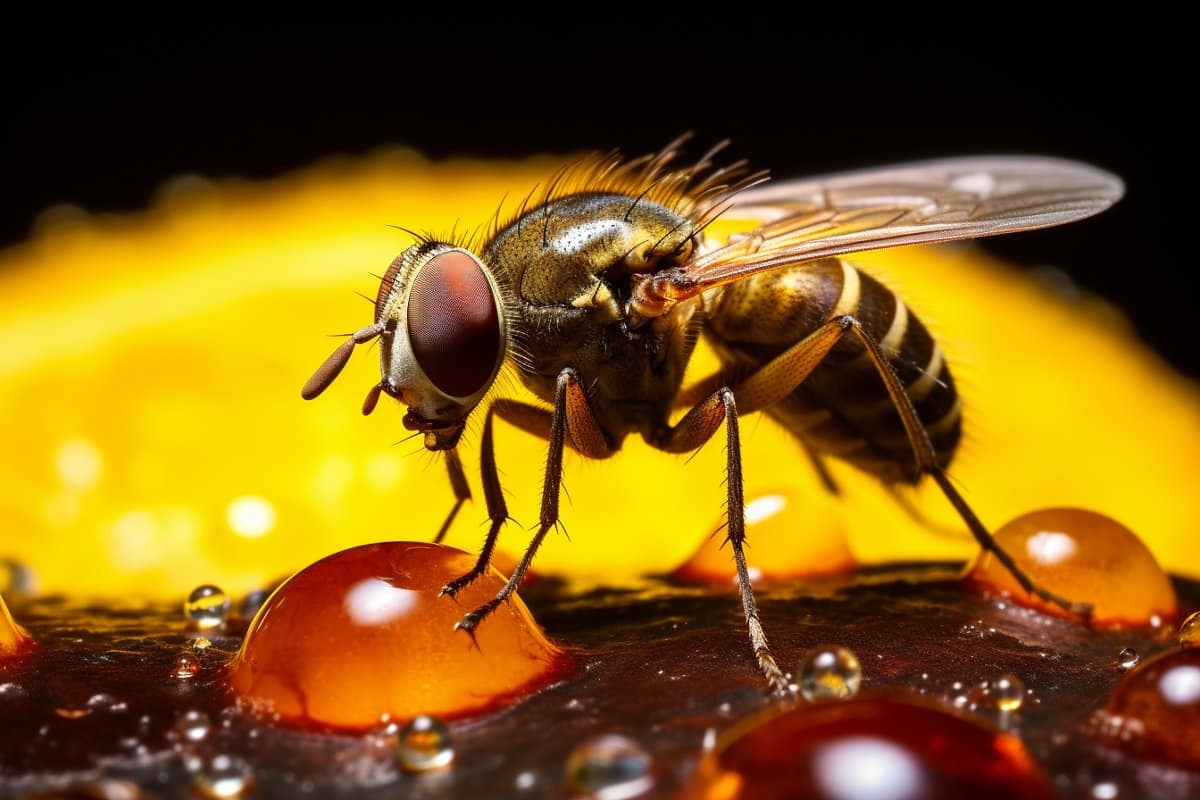Summary: Researchers mapped the sensory evolution of fruit flies, revealing how genetic variations enable them to adapt their sense of smell and taste to diverse environments.
The team discovered that while most genes remain stable across generations, a significant number have evolved, leading to unique olfactory experiences among different fly species.
This study not only highlights the role of stabilising selection in maintaining gene expression levels but also uncovers male-biased gene expression in scent detection, pointing towards sex-specific evolutionary paths.
These findings not only deepen our understanding of fruit flies’ sensory adaptations but also shed light on the broader mechanisms of sensory system evolution across species.
Key Facts:
- Researchers found a mix of stabilising selection and significant gene expression changes in Drosophila species, shaping their olfactory senses.
- The study identified male-biased gene expression in the front legs of D. melanogaster, suggesting a special role in male scent detection.
- This research offers insights into the evolutionary dynamics of sensory systems, with implications for understanding sex differences and sensory perception in a wide range of organisms.
Source: Queen Mary University London
A new study in Nature Communications unveils the hidden world of sensory evolution in fruit flies. By delving into the genes and cells behind their delicate noses and tongues, researchers have discovered surprising secrets about how these tiny insects adapt their senses to different environments.
“Imagine a world where a ripe peach tastes and smells like tangy vinegar to one fly, but like a burst of summer to another,” explains principal author of the study Dr Roman Arguello, a Lecturer in Genetics, Genomics and Fundamental Cell Biology at Queen Mary University of London. “Our study shows that this is not just possible, but it’s actually quite common.”

The research team analysed the gene expression patterns in five key scent-detecting tissues across six different Drosophila species. This comprehensive approach allowed them to delve deeper than ever before into the molecular underpinnings of smell.
One surprising discovery was the prevalence of “stabilising selection,” a force that keeps most genes expressed at the same levels across generations. However, within this sea of stability, the researchers found thousands of genes that had undergone significant changes in expression, shaping the unique olfactory landscapes of different fly species.
“It’s like finding hidden islands of diversity within a vast ocean of uniformity,” says Dr Arguello. “These changes in gene expression tell us about the evolution of new smells, new sensitivities, and even new ways of using scent to navigate the world.”
The study also reveals intriguing differences between the sexes. In fruit flies, as in many other animals, males and females often experience the world through different olfactory lenses.
The researchers identified a surprising excess of male-biased gene expression in the front legs of D. melanogaster, suggesting that these limbs play a crucial role in male-specific scent detection.
“These findings open up exciting new avenues for understanding how sex differences evolve and how they impact animal behavior,” says Dr Arguello.
The study’s implications extend beyond the fascinating world of flies. It provides valuable insights into the general principles of how sensory systems evolve, offering clues to understanding how other animals, including humans, perceive their chemical environments.
About this genetics and evolutionary neuroscience research news
Author: Ilyana Zolotareva
Source: Queen Mary University London
Contact: Ilyana Zolotareva – Queen Mary University London
Image: The image is credited to Neuroscience News
Original Research: Open access.
“Evolution of chemosensory tissues and cells across ecologically diverse Drosophilids” by Roman Arguello et al. Nature Communications
Abstract
Evolution of chemosensory tissues and cells across ecologically diverse Drosophilids
Chemosensory tissues exhibit significant between-species variability, yet the evolution of gene expression and cell types underlying this diversity remain poorly understood.
To address these questions, we conducted transcriptomic analyses of five chemosensory tissues from six Drosophila species and integrated the findings with single-cell datasets. While stabilizing selection predominantly shapes chemosensory transcriptomes, thousands of genes in each tissue have evolved expression differences.
Genes that have changed expression in one tissue have often changed in multiple other tissues but at different past epochs and are more likely to be cell type-specific than unchanged genes.
Notably, chemosensory-related genes have undergone widespread expression changes, with numerous species-specific gains/losses including novel chemoreceptors expression patterns. Sex differences are also pervasive, including a D. melanogaster-specific excess of male-biased expression in sensory and muscle cells in its forelegs.
Together, our analyses provide new insights for understanding evolutionary changes in chemosensory tissues at both global and individual gene levels.






